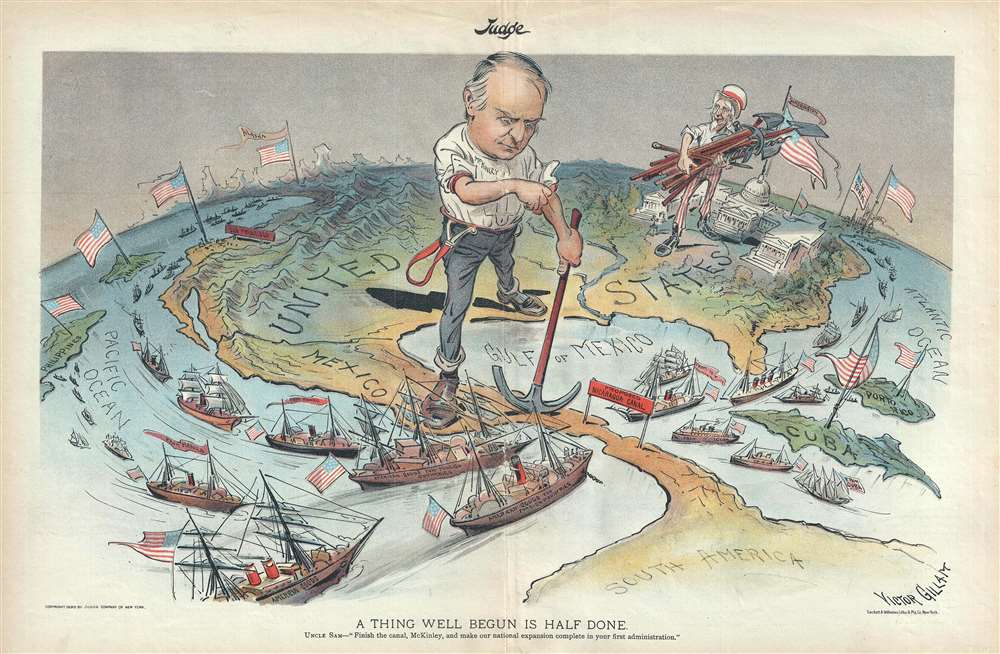This item has been sold, but you can get on the Waitlist to be notified if another example becomes available, or purchase a digital scan.
1899 Gillam Political Cartoon Heralding the Construction of the Nicaragua Canal
WellBegunHalfDone-gillam-1899
Title
1899 (dated) 12.75 x 19 in (32.385 x 48.26 cm)
Description
The years around the turn of the 20th century saw the United States emerge onto the world stage. Although American expansionism had been national policy since well before the American Civil War, it was not until after the American victory in the Spanish-American War that the United States believed it was taken seriously in a global sense. Many politicians professed concern that America lacked an overseas empire, even though it had easily annexed Texas, northern California, Alaska, and Hawaii in recent history.
Americans had remained staunchly isolationist throughout their country's history, even in the face of American 'Manifest Destiny'. The Spanish-American War began to change the country's perspective, particularly following the cession of Guam, the Philippines, and Puerto Rico to the United States in the treaty ending that war. Cuba also became an American protectorate.
The new atmosphere of global importance influenced the United States into appointing an Isthmian Canal Commission to determine the best route for a canal across Central America. As a French company had already claimed the route through Panama, it was determined that a canal across Nicaragua was the best option for the United States. Soon, however, the French company folded, and the U.S. managed to gain possession of the Panamanian route and quickly moved their operation to that site. American eagerness to complete the canal, and ease commerce between the East Coast (represented here by Washington, D.C. and New York) and the West Coast (San Francisco), is personified by Uncle Sam bringing McKinley an armful of tools to help him complete the task of building the canal. Enthusiasm for the project is also illustrated by the line of ships streaming toward the 'proposed Nicaragua Canal' from both coasts, merchants eager to avoid the perilous voyage around Cape Horn or the costly and time-consuming cross-country trip by rail for stagecoach.
This wonderful cartoon was created by Victor Gillam and published in the October 7, 1899 issue of Judge magazine.
Cartographer
Frederick Victor Gillam (c. 1858 - January 29, 1920) was an American political cartoonist, best known for his work in Judge magazine. His work was also published in The St. Louis Dispatch, Denver Times, New York World and New York Globe. He was born in Yorkshire, England and his family immigrated to the United States when Gillam was six year old. His older brother Bernhard Gillam (1856 - 1896) was a famous cartoonist as well, leading Gillam to sign his work 'Victor' or F. Victor' until his brother's death. He was also a member of the New York Press Club and New York Lotos Club. Gillam died in Brooklyn, New York on January 29, 1920. More by this mapmaker...

